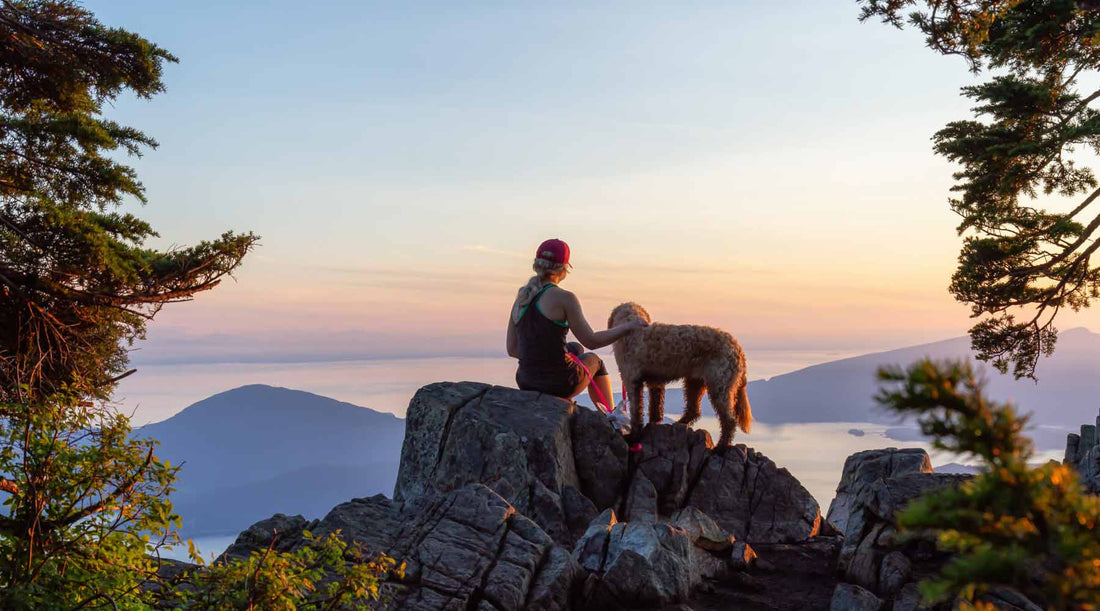
8 Important Tips for Hiking and Backpacking With Your Dog
If you’ve got a dog at home, chances are they love getting outside as much as (or more than) you do. If that’s the case, they’ll probably enjoy a hike, too. After a few times on the trail, they may even go nuts at the sight of a daypack.
If you’re an avid outdoor enthusiast, you might regularly bring your dog on hikes and camping trips. But if you’ve never brought your pup — and you want to give it a try — we have some tips for you.
Whether you’ve got a new puppy or an older dog, these tips can make spending time outside together even better.
1. Don’t Skip Pre-Hike Training (For You and Your Dog)

Before hitting the trail, give your dog plenty of opportunities to socialize. If you’re going to take your dog on a crowded trail, it’s important they’re comfortable around other people and dogs. A good place to start is the dog park, where your dog can meet new dogs, smell new smells, and see new sights. And you’ll have the opportunity to see how they handle all the excitement.
It’s also a good idea to do a little physical training with your dog. If your dog isn’t used to going on longer walks, gradually lengthen them over time. Make sure you take your dog's weight, age, and health into account.
Pro-Tip: If you’re worried about your dog’s health, schedule a checkup with your vet before hiking.
2. Find a Dog-Friendly Trail

Before heading out to a new trailhead, do some research to make sure dogs are allowed. There’s nothing worse than making a long drive only to find out you can’t take your pet on the trail.
Lots of state and national parks restrict dogs from park trails. Often, restrictions help protect both local wildlife and plants — but these restrictions are for your pet’s safety too. Take “no dog” zones seriously, and stick to dog-friendly trails.
Speaking of dog-friendly trails, check out signs at the trailhead with any rules and regulations. In most cases, your dog needs a leash. Even if leashes aren’t required, it’s a good idea for your first few hikes.
In addition to whether or not a trail welcomes dogs, you should think about trail conditions — and how gentle or rough a trail will be on your dog’s paws. For example, trails with lots of sharp rocks aren’t great for your dog.
Of course, think about the weather, too. If it’s hot outside, you’ll want to pick a trail with shade, water, or both so your dog can cool off.
If you’re having a hard time finding a trail, check out the Best Hikes With Dogs guidebook series for suggestions in your area.
Pro-Tip: Make sure your dog is wearing tags. If you get separated from your dog, current tags can help whoever finds him.
3. Pack Food and Water for You and Your Dog

When you hit the trail, you make sure to bring plenty of snacks — like trail mix, granola bars, and beef jerky — and lots of water. Make sure your dog is taken care of by packing food and water for him, too.
Depending on how long you’re out, you may need to bring a meal or two for your dog. It’s always a good idea to have more than you think you’ll need, just in case. Otherwise, treats are great to have when you need to get your dog’s attention or reward him on the trail.
Bring a separate water bottle and collapsible water bowl for your dog. You can pour any extra water your dog doesn't drink back into their water bottle (and not have to share yours).
Pro-Tip: Did you know there are energy bars for dogs? These are great to stash in your daypack for when your dog needs a boost of energy.
4. Leave No Trace

Leave No Trace principles apply to dogs, too. Do your best to keep your dog on the trail and out of sensitive or delicate areas. Leave No Trace also means picking up after your dog when nature calls.
Ideally, you can get your dog to do his business at home or at the trailhead. But you can’t always predict these things, so be prepared to handle it on the trail. That means having a shovel ready to bury the dog poop 6 to 8 inches deep, at least 200 feet from water, camp, and trails — or packing it out in a poop bag. If you’re relatively close to the trailhead, it’s better to pack it out.
5. Let Your Dog Carry a Pack

Depending on the size, age, and fitness of your dog, you can let him carry his food, water, and poop bags in his own pack. It's best to visit a pet store with a good selection of packs. That way, you can try several packs to find one that fits your dog well.
Let your dog get used to the pack by wearing it around the house, making sure it's comfortable and doesn't chafe. Load your dog's pack evenly on both sides, and check with your vet about how much weight your dog can safely carry.
Take a few easy test walks with the pack, and pay close attention to your dog for any signs of discomfort. Make adjustments to the pack as needed.
Pro-tip: There’s such a thing as a first-aid kit for your dog, too. It can come in handy on the trail, so pack it in your backpack or your dog’s.
6. Pack Warm Layers for Your Dog

Bring appropriate clothing for your dog if the weather calls for it. They likely won't need a jacket while hiking. But if you’re hiking or camping in cold weather, they may need one during long breaks or for overnight stays.
If you’re camping overnight, bring what your dog needs to be comfortable. If it’s really cold — and you have enough room — you can always share your sleeping bag with your dog.
Pro-Tip: When camping overnight, avoid a muddy mess by bringing a camp towel. Wipe your dog off before he gets into the tent.
7. Take Plenty of Breaks

Keep a close eye on your dog throughout your hike. Look for signs of discomfort, overheating, or exhaustion. If you notice limping, panting, or unusual behavior, take time to find the cause. Take frequent breaks for food, water, and rest.
Remember that you and your dog may not need breaks at the same time — but when either one of you does, it’s time to take one.
8. Check On Your Dog Before Driving Home

When you get back to the trailhead, reward your dog with a good pet, a treat, and some water. If your dog knows how, you can even celebrate with a high-five!
Before hopping in the car, take time to give your dog a final once-over. Look at his paws, belly, and anywhere his leash or pack may have rubbed. Look for ticks and bug bites, too. If anything needs attention, take a moment to treat it with your first-aid kit before driving home.
Pro-Tip: Keep an old blanket or towel in the car so your dog doesn't get the seats all muddy on the ride home.
Ready for your dog’s first hike?
We want to see and hear all about it! Follow us on Instagram, share photos of your pup on the trail, and tag us with #cloudlinesocks.

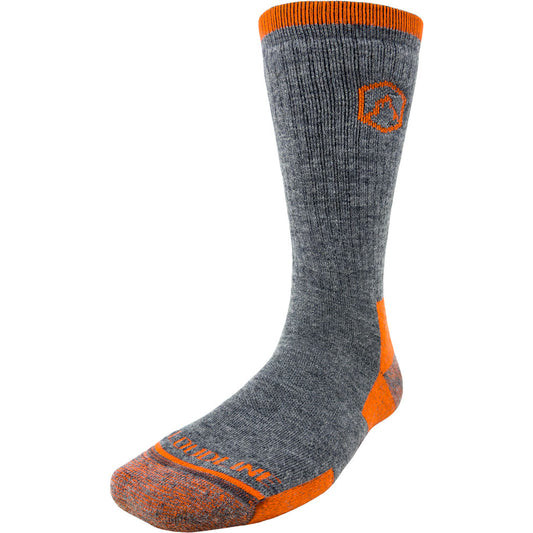
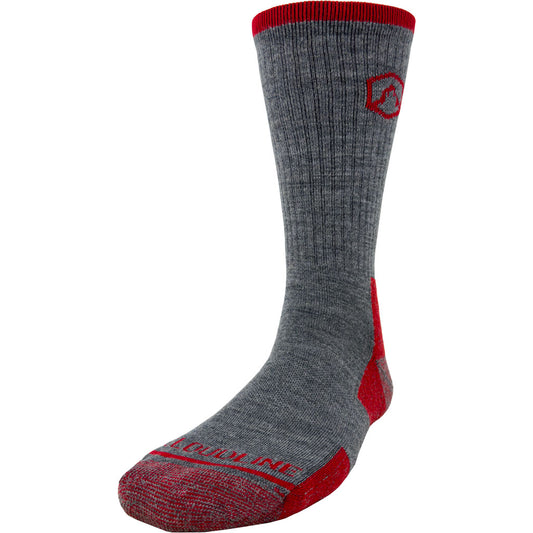
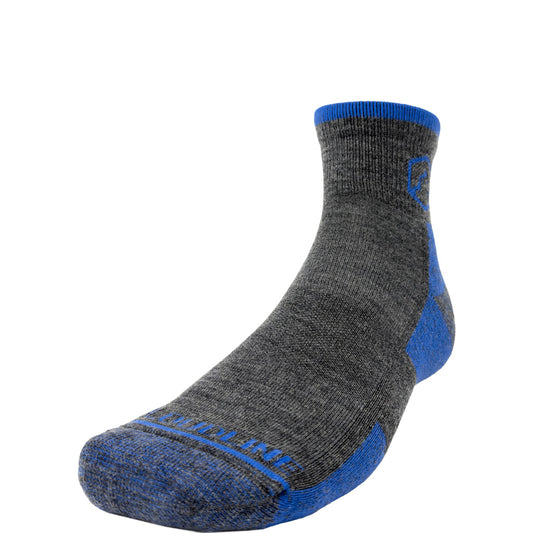
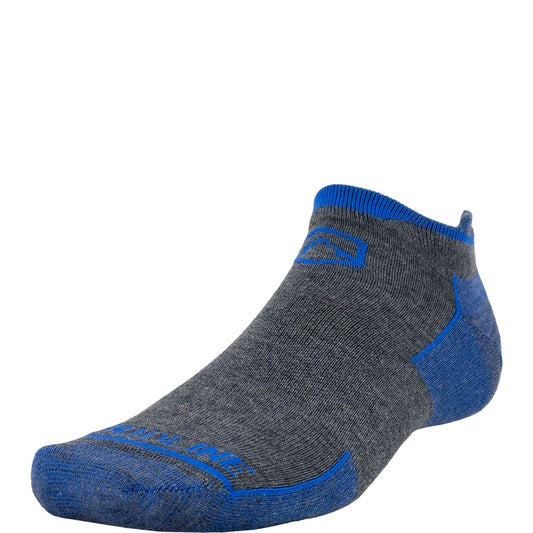
4 comments
I think most people pick up their dogs poop, bag it, and leave it next to the trail to pick up on the way back – at least that’s what I do… why carry it around when u can just grab it on the way out?
Great article! Thanks for sharing. It drives me insane how many poop bags I see along the trail! I can’t understand why people pick up the poop and then leave the bag!
All water, streams, lakes, rivers, have giardia and possibly other bacteria. You are always taking a chance. I usually let my dogs drink filtered water before jumping in a lake to cool off. Less chance of them actually drinking the water. Pain in the butt, but since the early 80’s or so, everything is polluted!
Great article! Thank you for the tips. One thing I would like to add is to find out about the water quality before you let your dog play in any open water areas. For example, runoff can pollute beach water if there has been a recent storm. The same goes for fresh water. After a long hot summer, water levels can decline and cause the bacterial levels to rise. We were caught off guard by this once while hiking with our dog in Northern California. Luckily, a Forest Ranger let us know about the dangers. Do not blindly trust the safety because other people and their dogs are playing in the water.